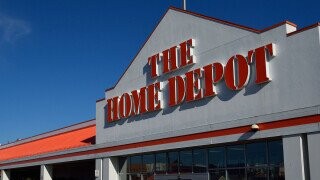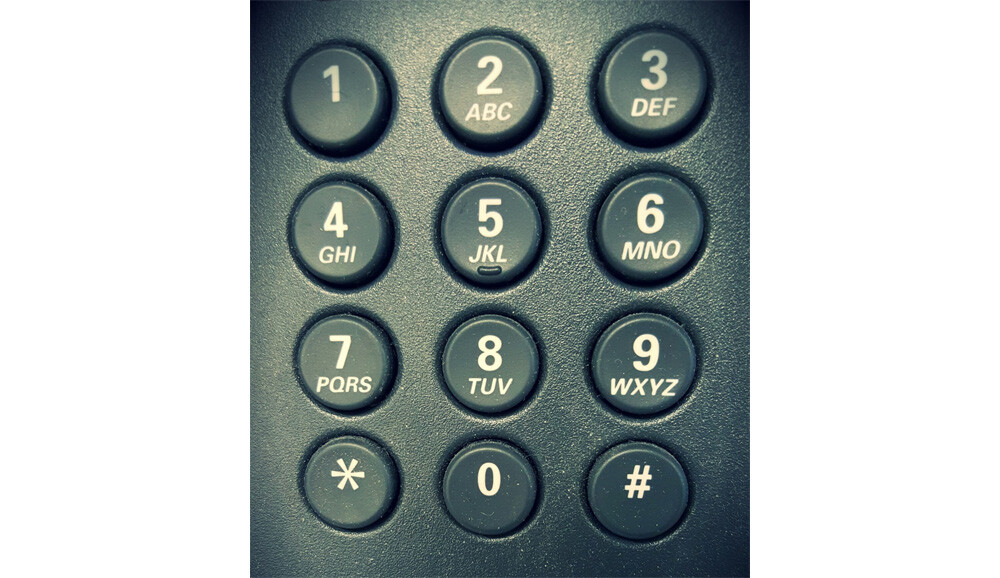5 Business Tricks That Were So Devilish, We Ain't Even Mad

In general, companies are evil and do all kinds of antisocial nonsense. But some tactics don't fill us with rage. They leave us wanting to clap the company on the back, saying, "You son of a gun, I wish I thought of that." That's especially true when, as in the following examples, the tactics are from decades ago. What's the harm in delighting in these stories of deception? We're not the ones being fooled.
Nathan's Hot Dogs Dressed Customers As Fake Doctors To Make The Food Look Healthy
No one buys hot dogs because they're good for you. We buy them because fat and salt are delicious, as though ground lips and anuses are the tastiest pasts of the animal. Still, all else being equal, people will steer away from a dog that's clearly even worse for you than the one right next door. That's why, when they started out, Nathan's Famous Hot Dogs had a problem.
Don't Miss
Nathan's was started in 1916 by Nahum Handwerker, a man whose name destined him to do something great with his hands, possibly to sausages. The Polish immigrant knew a lot about sausages, but his hot dog stand needed something a little extra to set it apart. So while every other stand charged a dime for each dog, Nathan charged a nickel. It should have been enough to get all the customers flocking to him, but the lower price suggested that maybe his meat was worse than competitors'.

In the end, the cheaper dogs did win out, and this was helped by Nathan's scheme to make the meat look safe. He planted some customers at the stand wearing white coats, and also photographed some of these very scientific-looking men for promotional photos. He never actually said these were doctors, so he didn't commit fraud. But customers assumed these were staff from the nearby Coney Island Hospital, and if the dogs were good enough for the doctors, they couldn't be that bad after all.
A Vodka Company Created A Whole Bank
Roustam Tariko made his first fortune importing a restricted product into Russia and breaking protocol by selling at stores anyone could access. This product was Ferrero Rocher chocolates. He moved on to importing alcohol then created Russia's first own premium vodka brand. Vodka had always been popular in Russia of course, but up till this point, we guess people just made vodka from rotting potato peels, as anything more extravagant was previously banned under communism.
When Tariko's new Russian Standard vodka debuted in 1998, it was a huge success. Then the government banned advertising vodka. Note: We had some trouble tracking down the exact ban that affected Tariko, but that's not for lack of info on Russian ad bans. Instead (seriously), it's because Russia has implemented so many bans on advertising alcohol, with new ones replacing rescinded ones and filling in the loopholes old bans left open.
None of these bans ended Russia's vodka obsession, but this one did stand in the way of Tariko's plans. Then he figured out a way he could advertise Russian Standard after all. He just, no big deal, took his money and founded a bank. He gave the bank the same name and logo as the vodka, so when people saw his new ads for the bank, they were also being advertised the vodka.

Business advisers didn't like the idea at all because they figured, hey, that plan sounds all fine and good for the vodka brand, but it spells doom for the bank. People need to trust their bank, and as much as vodka means to people, it doesn't inspire much trust. And yet Russian Standard ended up much more than just a gimmick to sell booze. In a couple decades, it become one of the biggest banks in the country, and Tariko himself became a billionaire.
We could say he laughed off those advisers' concerns, laughed all the way to the bank. Though, when someone already owns the bank, "all the way to the bank" sounds kind of lame. It's like you saying, "Ha! Now, I'm laughing all the way to the couch."
The "I Don't Care" Phone Company Grabbed Customers Who Didn't Care
Many years ago, we had something called payphones, which we kept in booths mainly used for sex stuff. Booths were also used for leaving the matrix (both processes were referred to as "jacking"), and according to government propaganda, some payphones still exist today. The way they work now, each is associated with a fixed phone carrier. You can enter a code to switch to your provider of choice, but you're otherwise stuck with whatever they give you.

In the '90s, however, phone carriers waged a serious war over who got to handle your long-distance calls. If you dialed on a payphone, you might find yourself speaking to an operator, who'd ask you which carrier you wanted to use. Maybe you'd say "AT&T." Maybe you'd say "MCI." Maybe you’d say "I don't care" because c'mon. You ever heard the joke that America should have "I don't care" as the president, since given the low turnout, that's most voters' preference? Thanks to that same indifference, "I don't care" should have been a leading phone carrier.
That's what one Texas guy figured, except he wasn't joking. His name was Dennis Dees, and he founded a company called KTNT, which you just might mistake for AT&T if you aren't listening carefully enough. Under this parent company, he created a long-distance carrier named "I Don't Care." When callers told the operator "I don't care," the call would get assigned to KTNT, which actually charged rather more than competitors ($7.64 for the same call AT&T billed at just $4.63). This wasn't fraud, as the operator confirmed each time that the caller was actually willing to choose the carrier called "I don't care." Callers generally said yes, since they didn't care.

Of course, not everyone used the exact phrase "I don't care." Asked to choose a carrier, some callers said, "Whatever." Others said, "It doesn't matter," or "any one is okay." So, KTNT created companies under those names too, plus others, a total of 57 different names registered with the Texas Public Utility Commission. They got some pushback when they tried pulling the same stunt in other states, but while still in Texas, by 1997, KTNT was taking in $1 million a year.
Phone companies pulled other shenanigans too. We could talk about them all day, talk about them on the phone. For example ...
The Case Of 1-800-OPERATER
The other big battle among phone carriers in the '90s was who got to handle collect calls. Collect calls, also known as reverse charge calls, charge the recipient instead of the caller and were great for people who got stranded and desperate, or who were just habitually cheap. You could make a collect call by dialing the operator and asking them, or you could dial 1-800-COLLECT, which charged more. Why would anyone choose 1-800-COLLECT then? Marketing, of course!
Picking the wrong carrier can be a fatal mistake (unless you're like Homer and can't die)
1-800-COLLECT was run by MCI and charged a minimum of $30 for every call. AT&T offered a competing service, but it didn't take off. They polled customers on why they dialed 1-800-COLLECT instead of using their own carrier, and AT&T customers replied that they thought 1-800-COLLECT was run by AT&T.
Clearly, AT&T needed to market their own service better, providing a snappy number people could dial, one just like 1-800-COLLECT. So they came up with 1-800-OPERATOR (which is eight digits, but that's fine; the phone system just ignores the eighth digit). Great! Only problem was, "operator" is a surprisingly tough word to spell. A fair number of Americans mistakenly thought it was spelled "operater," so they dialed 1-800-673-7283 instead of 1-800-673-7286.

That's where MCI came in. Because, see, MCI owned 1-800-673-7283 (1-800-OPERATER). Now, when AT&T customers unwittingly dialed that number, MCI did not put their collect call through using their own service—this is yet another story in which our deceptive company wanted to stay on the right side of the law. But MCI arranged it so calls to the number did go through, and then rang endlessly, annoying everyone who dialed it and convincing them AT&T's service didn't work.
Collect calls aren't a big deal anymore. 1-800-COLLECT still exists, but AT&T stopped supporting the calls, as did Verizon. Cell phone plans eliminated the need, mostly, and if you happen to lose your cell phone, you've got a bigger obstacle than price keeping you from calling: the small fact that you don't know anyone's number.
Home Depot Filled Itself With Prop Merchandise
Stores like Home Depot are filled with stuff, stuff they don't necessarily own. When a retailer stocks a bunch of products made by other companies, they're not like your aunt with a van of skin cream she bought herself and now must sell or die, having blown her savings on inventory. With many items, the store just holds the item for the vendor, and they pay the vendor nothing until you buy it. In general, this is called buying on consignment, but retailers might call it something else, like "pay by scan."

But if they give it to you, for free, they're on the hook for the price.
When Home Depot opened in 1979, vendors weren't willing to give them stuff on consignment. The vendors had no proof Home Depot was legit—for all they knew, the Home Depot business plan consisted of getting a bunch of merchandise from gullible vendors, selling it on the black market, then vanishing, never to be seen again. The founders of Home Depot now scaled back their plans to open in a bunch of locations. And even with their less ambitious plan to open just two stores, they couldn't afford to buy enough goods to fill the shelves.
So they gave vendors a new request: "Can we just have some empty boxes? Boxes that are labeled like they're full of your awesome stuff, but have nothing in them?" The vendors, who normally just sent those boxes to the recycling center (if they weren't first waylaid and robbed by box-hungry moving homeowners), said yes. Home Depot was now able to give their stores the appearance of being giant warehouses filled with actual products. The loaded shelves, piled with unreachable boxes, awed customers into buying the few real items the store had onsite.

That wasn't the only trick struggling Home Depot had up its sleeve. Founder Bernie Marcus often took to standing right outside the store and offering dollar bills to any customer wiling to come inside and look around. This story has an important lesson. If a strange man offers you money to come "take a look" inside his "depot," be sure to accept his invitation. You may be in for a treat.
Follow Ryan Menezes on Twitter for more stuff no one should see.
